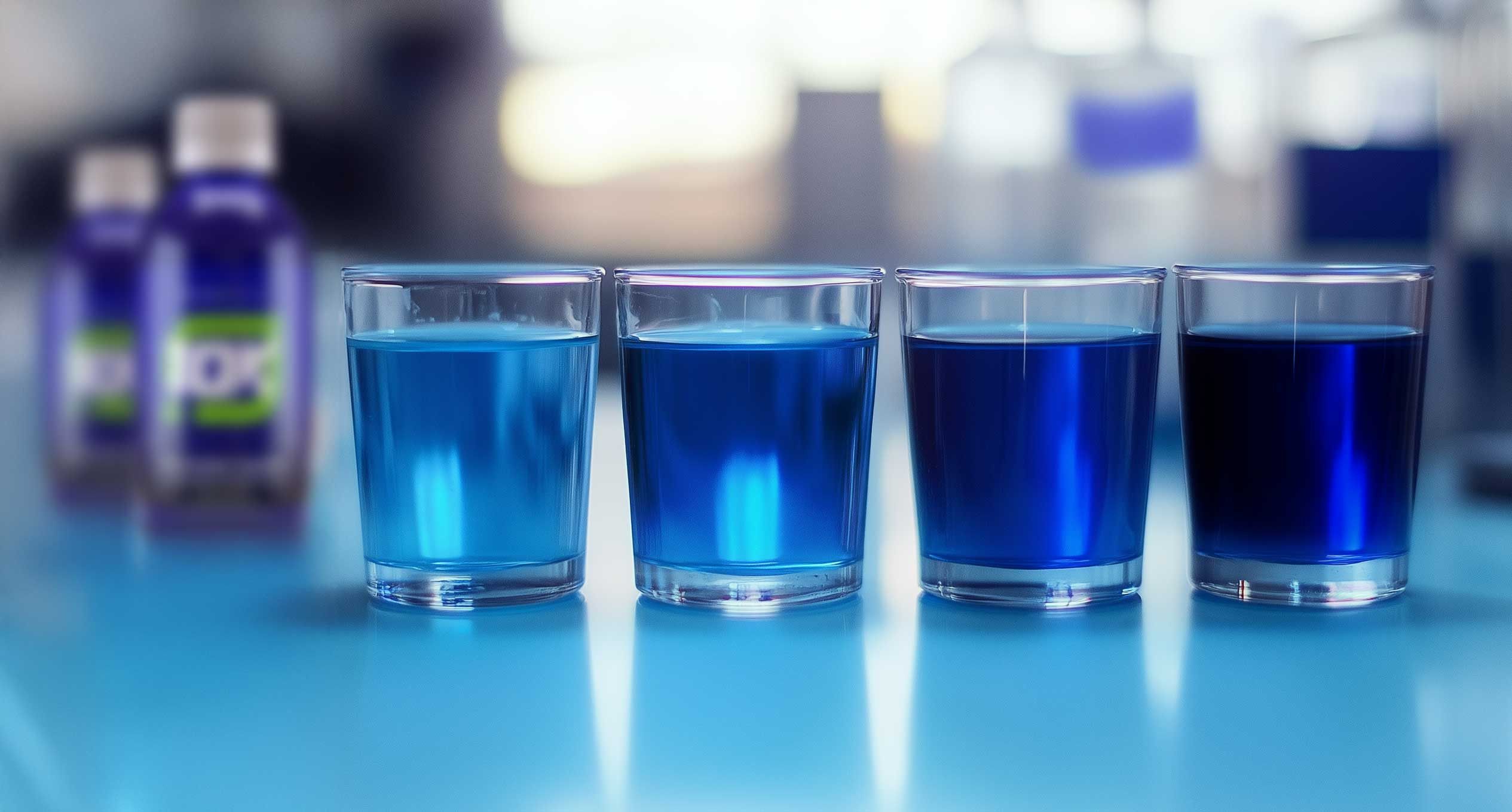Put an end to random comparisons!
When comparing two spirulina extract-based products, it can be tempting to judge quality by color. We might think that a darker blue product is necessarily more concentrated in Phycocyanin than a lighter one, that precious liquid protein with remarkable antioxidant properties. However, this is not always true, and it's important to understand why.
Color and concentration: two distinct characteristics!
Let's take a simple example: imagine a grenadine syrup. The color of this syrup may vary depending on whether it is naturally clear or whether a red colorant is added to intensify its hue. However, this does not affect the pomegranate extract content. Similarly, the color of a Phycocyanin-based product does not always reflect its actual concentration. Many factors influence the color, such as the extraction method, formulation, pH and matrix used.
Quality extraction: the real guarantee of efficiency!
At PHYCOMANIA, our Phycocyanin is extracted exclusively from fresh spirulina, without chemical solvents. This preserves its bioactive properties. Unlike spirulina extracts dried at temperatures exceeding 35°C, which can alter the quality of Phycocyanin, we ensure that our extraction method respects the product, guaranteeing optimal efficacy.
Don't rely on color alone
Some consumers may be surprised by a product's greater or lesser clarity, especially when compared with others that appear darker. However, lightness does not necessarily mean a lower concentration of active ingredients. For Phycocyanin, let's get back to what interests us in this article. Phycocyanin is composed of several sub-compounds with distinct absorption wavelengths. Each wavelength corresponds to a specific form of Phycocyanin, and their distribution can influence product color. The concentration of these compounds, as well as the presence of cofactors, requires a spectrographic (i) analysis method adapted and calibrated specifically to the properties of each active ingredient.
Naturally, the method used by PHYCOMANIA has been calibrated for our extract and product, with assays at two wavelengths, 620 nm and 650 nm.
Customer Feedback
Our customers report that they find our Phycocyanin 10K more effective than other products, sometimes advertised as more concentrated. This feedback underlines that the bioactive power of a product is not measured by color or apparent concentration alone, but by the quality of the extraction and preservation of Phycocyanin's active properties, as well as by a perfectly adapted analytical method to qualify its true concentration.
Conclusion
The color of a Phycocyanin product is only a visual indicator and does not systematically reflect its concentration or bioactive efficacy. At PHYCOMANIA, we are committed to offering a high-quality product, extracted from fresh spirulina, to guarantee the best of Phycocyanin's benefits, without compromise.
___________
(i) - Spectrographic analysis method: This is a scientific technique that measures the quantity of certain components in a substance, such as Phycocyanin in our case, by analyzing the way light interacts with these components. Each type of molecule absorbs and reflects light at specific wavelengths, making it possible to determine its concentration. In this way, a spectrographic analysis method gives us precise information on the composition and quality of a product, beyond what can be perceived visually, such as color.


 The guardians of vitality : The Ultimate Synergy
The guardians of vitality : The Ultimate Synergy
 USER GUIDE FOR CHLORO B 5K: CHLOROPHYLL THE GREEN POWER OF SPIRULINA
USER GUIDE FOR CHLORO B 5K: CHLOROPHYLL THE GREEN POWER OF SPIRULINA
 How does the color of the product not determine the Phycocyanin concentration?
How does the color of the product not determine the Phycocyanin concentration?
 The benefits of phycocyanin
The benefits of phycocyanin
 Best Dietary Supplements: What are the Essential Dietary Supplements
Best Dietary Supplements: What are the Essential Dietary Supplements
 Spirulina Culture: How is Spirulina Cultivated?
Spirulina Culture: How is Spirulina Cultivated?
 The essential differences between spirulina and phycocyanin
The essential differences between spirulina and phycocyanin
 User Guide 10K Phycocyanin Dietary Supplement: The Bioactive Heart of Spirulina
User Guide 10K Phycocyanin Dietary Supplement: The Bioactive Heart of Spirulina
 Phycocyanin: A natural weapon against free radicals
Phycocyanin: A natural weapon against free radicals
 Phycocyanin and blood sugar: can phycocyanin help promote glycemic balance?
Phycocyanin and blood sugar: can phycocyanin help promote glycemic balance?
 The Benefits of Phycocyanin for Athletes to Enhance Performance
The Benefits of Phycocyanin for Athletes to Enhance Performance
 Boosting natural defenses: How does phycocyanin enhance your immune system?
Boosting natural defenses: How does phycocyanin enhance your immune system?
 Phycocyanin extraction: are all extraction methods as good as each other?
Phycocyanin extraction: are all extraction methods as good as each other?
 Understanding cyanobacteria: these multifaceted micro-organisms
Understanding cyanobacteria: these multifaceted micro-organisms
 Which is best? Phycocyanin in liquid, powder or tablet form?
Which is best? Phycocyanin in liquid, powder or tablet form?
 What is spirulina and what benefits does it have?
What is spirulina and what benefits does it have?
 What is the link between phycocyanin, physical recovery and sleep?
What is the link between phycocyanin, physical recovery and sleep?
 Better World Fund Cannes Festival 2022
Better World Fund Cannes Festival 2022